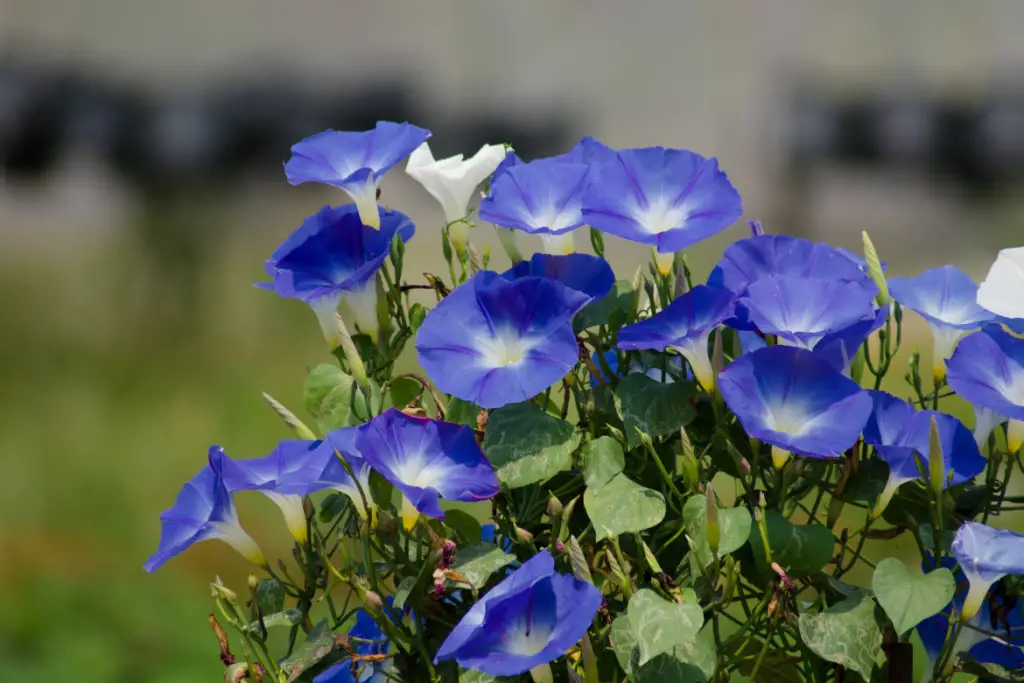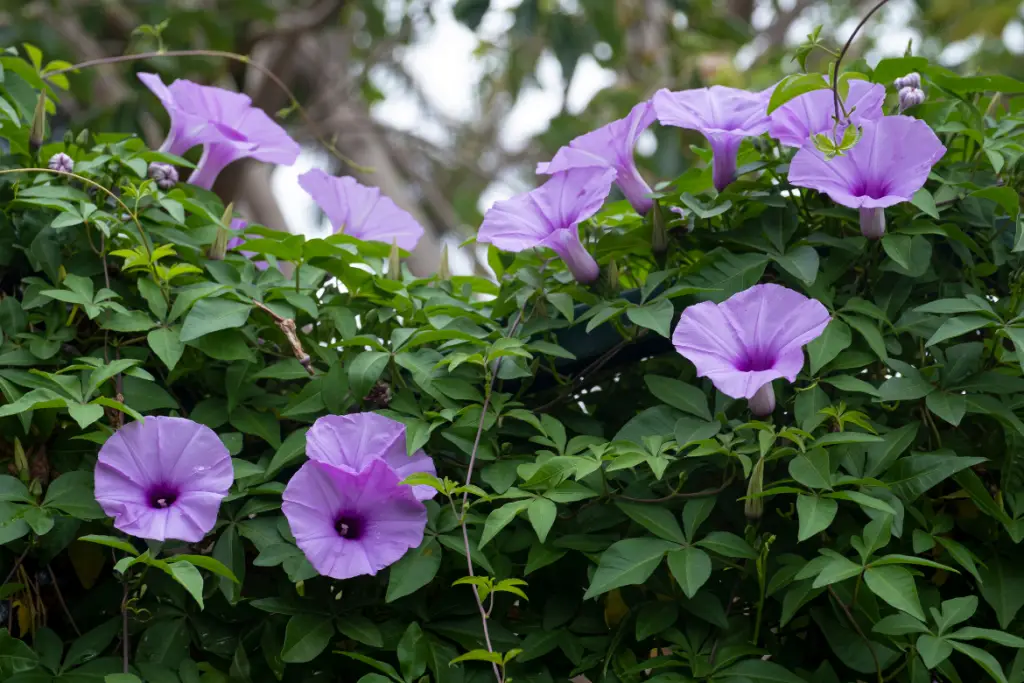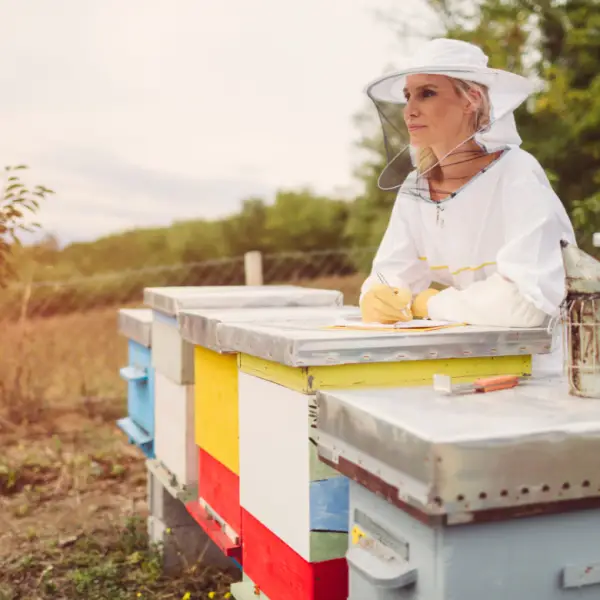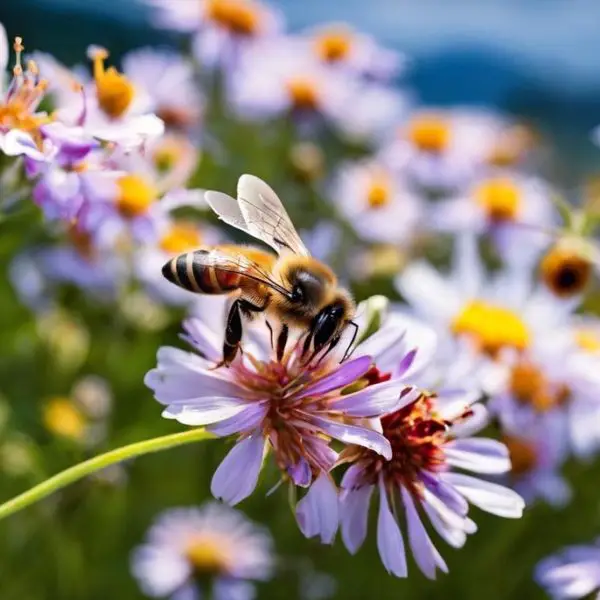Morning glories, with their enchanting blossoms and widespread popularity in gardens, serve as more than just ornamental additions. These captivating flowering plants, known for their diverse colors and intricate blooms, have become a staple in horticulture. Beyond their visual allure, the significance of morning glories extends to the ecological realm, particularly in their role as pollinator magnets. Bees, vital contributors to ecosystem health, are drawn to the nectar-rich morning glory flowers, establishing a mutualistic relationship that benefits both the plant and its pollinators. In this exploration, we delve into the intricate dance of pollination and the unique features of morning glories that make them irresistible to bees, unraveling the harmonious connection between these botanical marvels and their buzzing companions.

Morning Glories: Exploring Nature
Morning glories, belonging to the Convolvulaceae family, captivate garden enthusiasts with their stunning array of blooms and unique characteristics. These flowers, characterized by their trumpet-like shape and vibrant hues, encompass various species, each contributing to the diverse tapestry of garden landscapes. From the classic Ipomoea purpurea to the delicate Ipomoea tricolor, morning glories display a rich spectrum of colors, including shades of blue, pink, purple, and white. Their versatility and adaptability make them well-suited for a range of growing conditions, thriving in both gardens and containers. With a tendency to climb and trail, morning glories offer not only visual appeal but also functional benefits, providing shade and privacy when strategically placed. As we explore the nature of morning glories, their diversity and adaptability emerge as key elements that contribute to their widespread cultivation and popularity in gardens around the world.
Why Do Bees Love Morning Glories?
In the intricate world of pollination, morning glories and bees engage in a captivating dance that underscores the essential role of these buzzing insects in plant reproduction. Pollination, a fundamental process for the continuation of plant life, relies heavily on the active participation of pollinators, with bees playing a pivotal role. Morning glories, with their tubular blossoms filled with sweet nectar and abundant pollen, present an irresistible attraction for bees seeking nourishment. As bees collect nectar for their sustenance, they inadvertently transfer pollen from one flower to another, facilitating the reproduction of morning glories. The unique features of morning glories, such as their floral structure and the composition of their nectar, make them especially appealing to bees in comparison to other flowering plants. By analyzing this intricate pollination dance, we gain insight into the mutualistic relationship that has evolved between morning glories and bees, highlighting the significance of these interactions in sustaining both floral beauty and bee populations.

Bee Species and Morning Glories
A closer examination of the bee-morning glory relationship reveals the specific bee species that are particularly drawn to these enchanting flowers. Common bees, including honeybees (Apis mellifera) and bumblebees (Bombus spp.), exhibit a strong affinity for morning glories, displaying distinct behaviors as they forage for nectar and pollen. Observations of bee interactions with morning glory flowers unveil a dynamic process where the bees skillfully navigate the intricate blossoms to access the coveted rewards within.
Bee Species | Affinity for Morning Glories |
|---|---|
Honeybees (Apis mellifera) | High |
Bumblebees (Bombus spp.) | High |
Mason Bees (Osmia spp.) | Moderate |
Sweat Bees (Halictidae) | Moderate |
Carpenter Bees (Xylocopa spp.) | Low |
Scientific studies further corroborate the connection between morning glories and bee attraction, shedding light on the specific mechanisms that make these flowers a preferred choice for various bee species. Understanding the nuances of bee species’ preferences and behaviors about morning glories contributes to our broader comprehension of the intricate web of interactions within ecosystems, emphasizing the importance of these connections for both floral and pollinator diversity.
Benefits of Morning Glory Pollination
The interplay between morning glories and bees yields a cascade of benefits. As bees facilitate pollination, morning glory reproduction thrives, fostering genetic diversity and population health. Beyond the floral realm, this partnership supports overall biodiversity, enhancing ecosystem resilience. The economic impact is notable, with increased seed production influencing neighboring plant communities. The pollination services provided by bees visiting morning glories extend to various agricultural crops, emphasizing the broader significance of this mutualistic relationship for both natural ecosystems and human cultivation.

Bee-Friendly Gardens
In cultivating bee-friendly gardens, enthusiasts can play an active role in supporting the delicate dance between morning glories and bees. Gardeners keen on attracting and supporting bees can implement practical tips, such as selecting a diverse array of bee-friendly plants and strategically planting morning glories to optimize bee engagement. By fostering an environment rich in biodiversity, gardeners contribute to the well-being of both morning glories and their buzzing pollinator companions. Emphasizing the importance of biodiversity in gardens becomes crucial, not only for the health of individual plant species like morning glories but also for sustaining a thriving ecosystem that relies on the pollination services provided by bees.
Conclusion
The harmonious connection between morning glories and bees unfolds as a captivating tale of mutual benefit. Morning glories, celebrated for their visual appeal, reveal a deeper significance as they attract and engage various bee species. The intricate dance of pollination, driven by the bees’ pursuit of nectar and pollen, underscores the essential role these buzzing insects play in the reproductive success of morning glories. Through scientific observations and studies, we’ve uncovered the specific bee species drawn to these flowers, further highlighting the nuanced relationships within ecosystems. As morning glories contribute to biodiversity, ecosystem health, and even economic aspects through pollination services, the call to action for cultivating bee-friendly gardens becomes imperative. This exploration underscores not only the ecological importance of morning glories but also the crucial role that individual gardeners can play in fostering a thriving and interconnected natural world.


